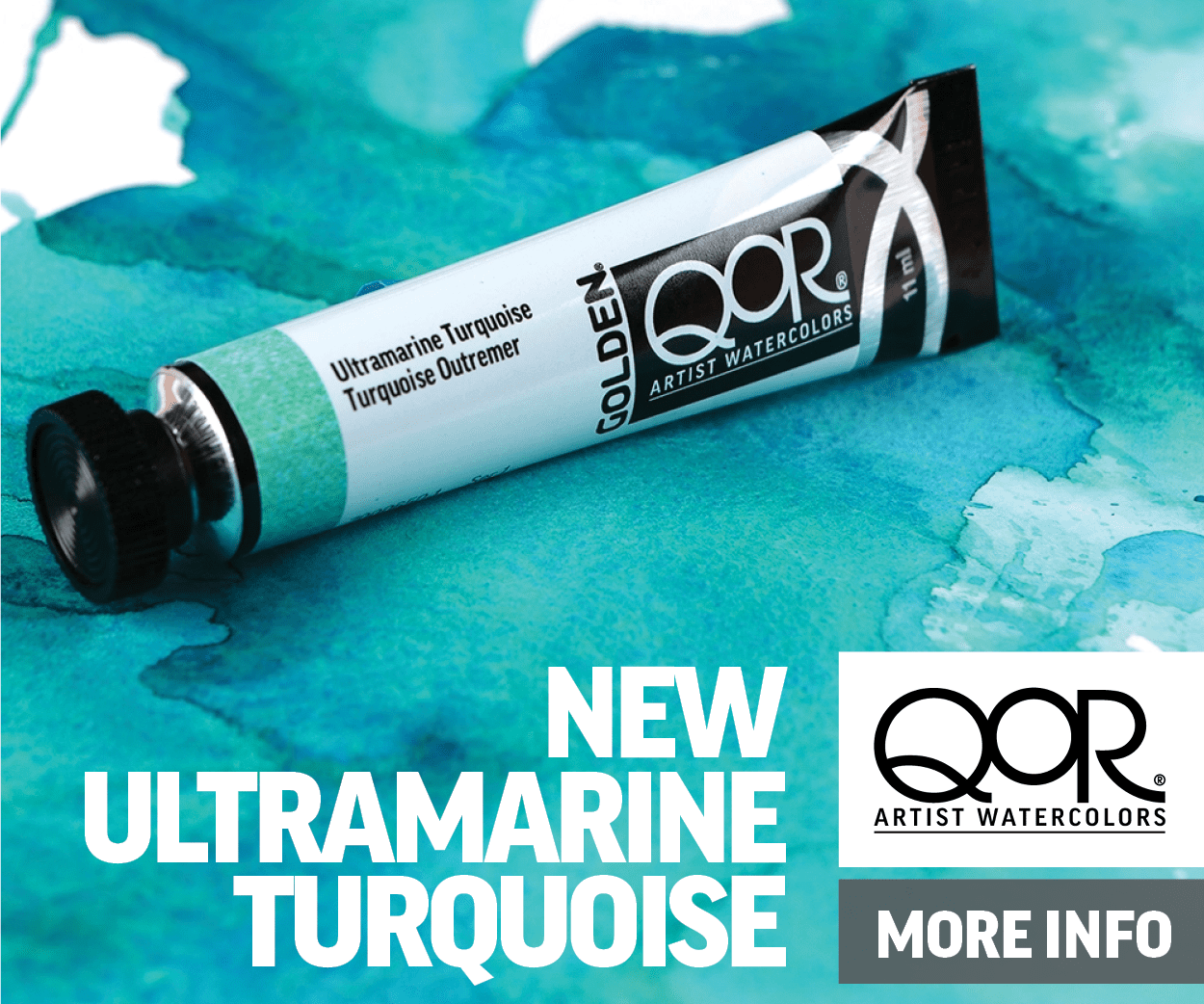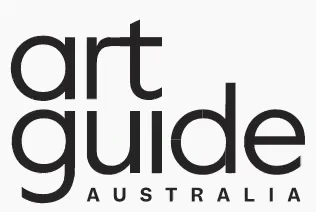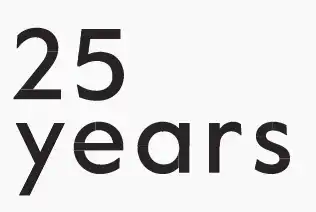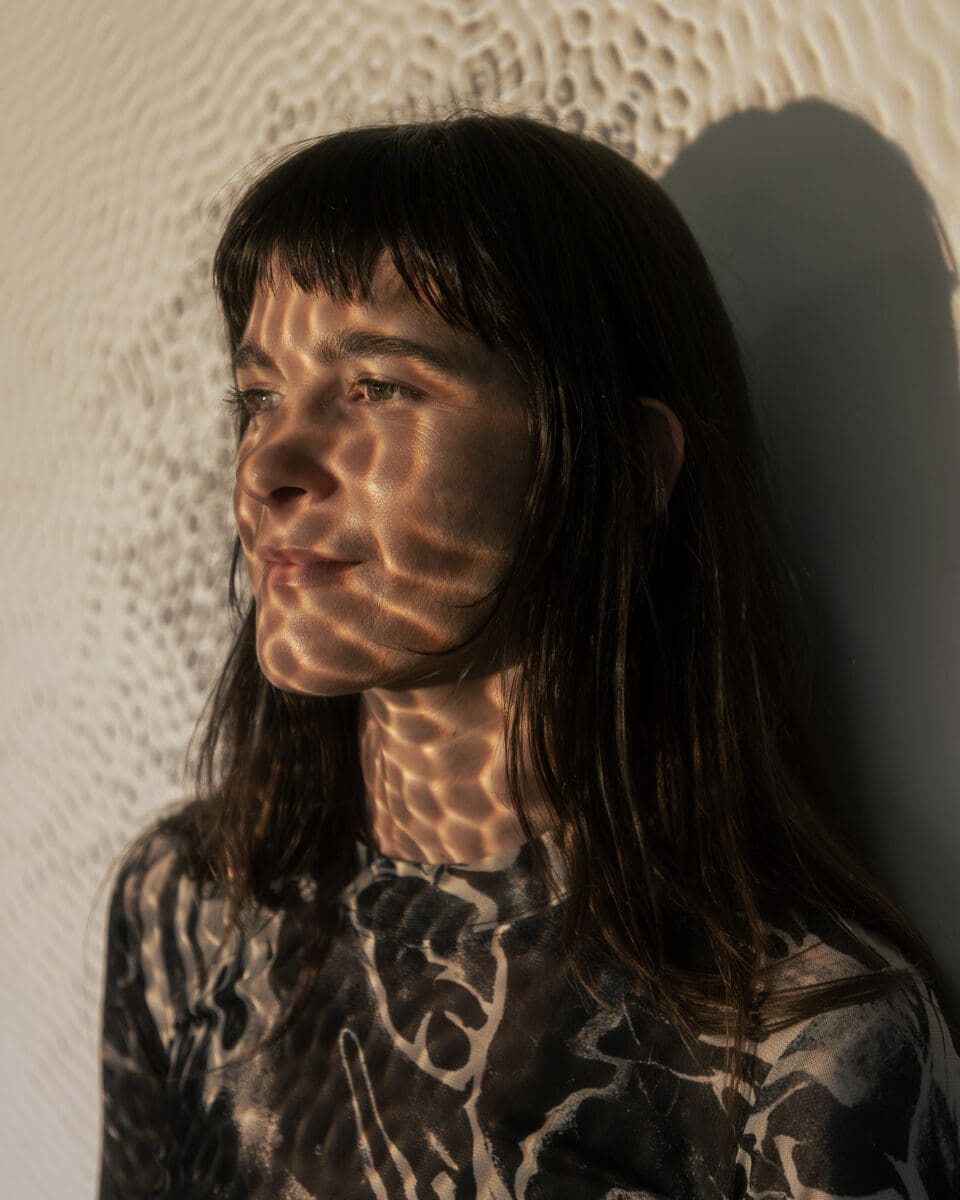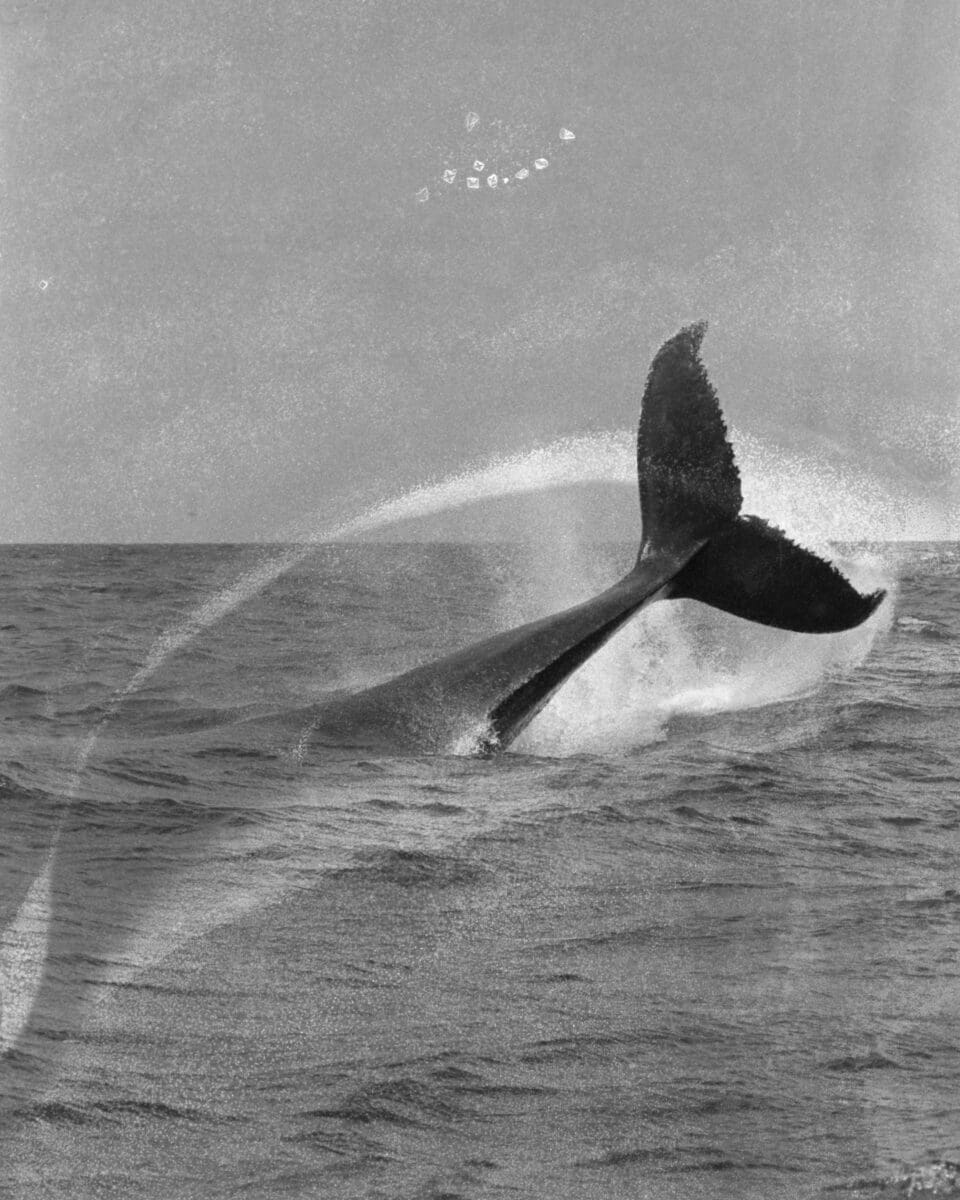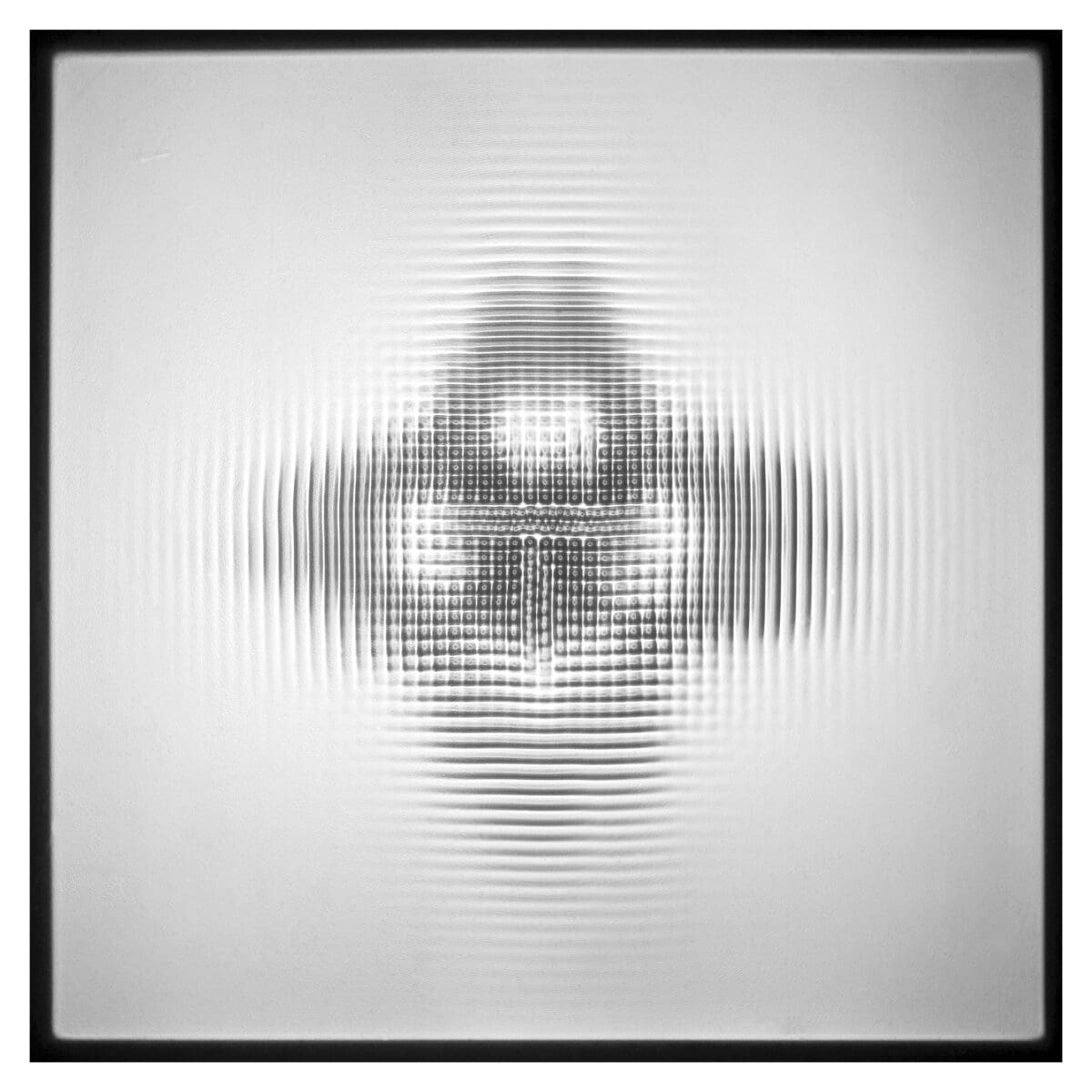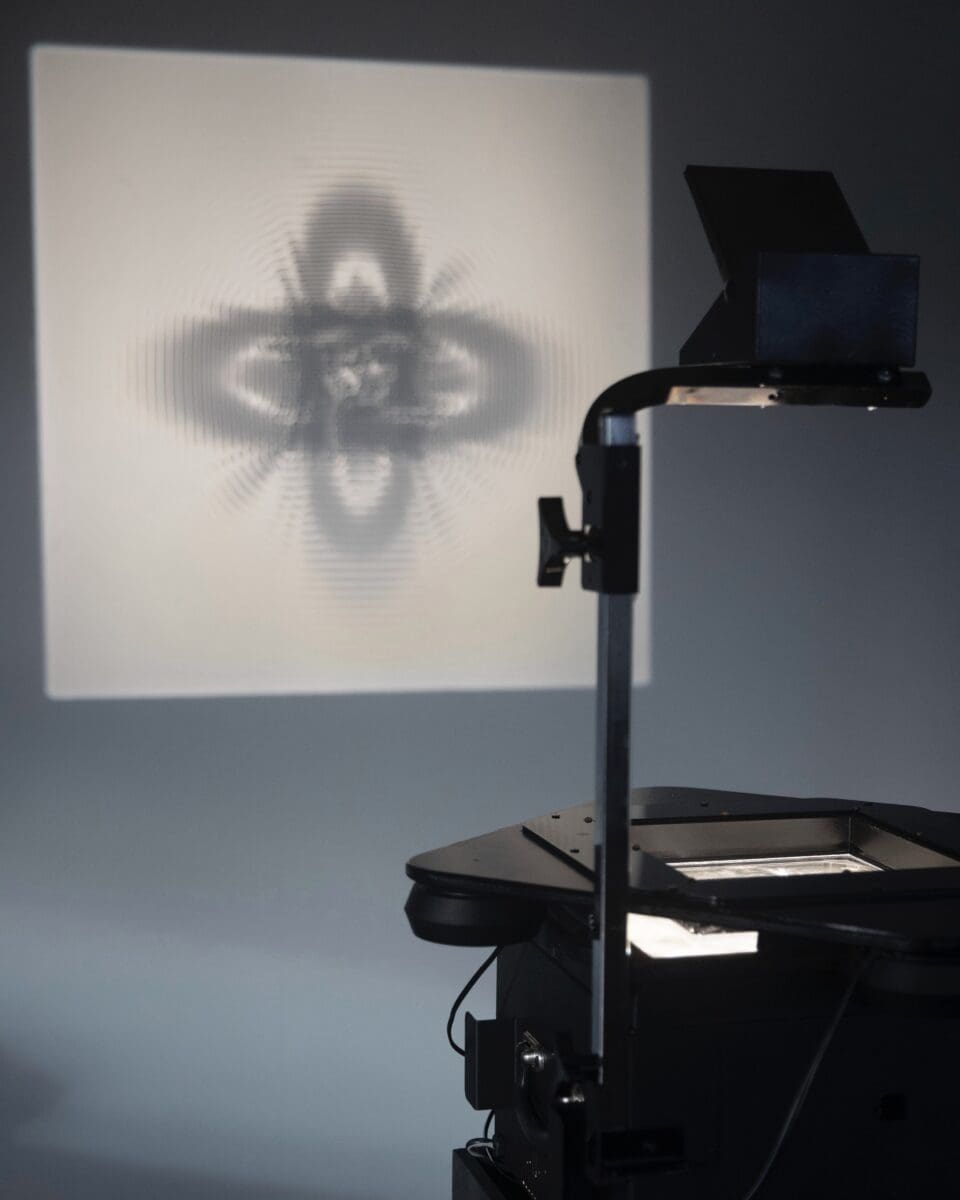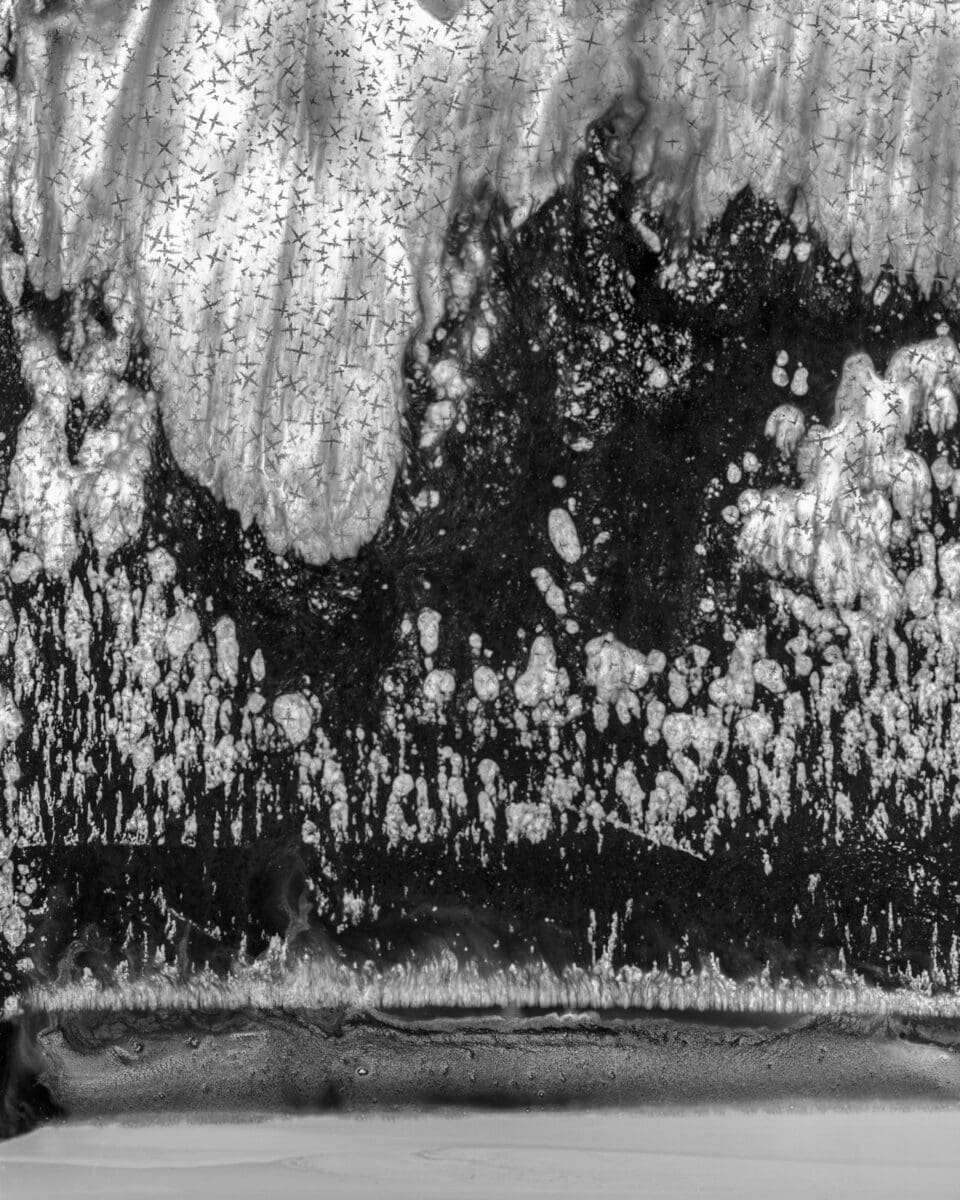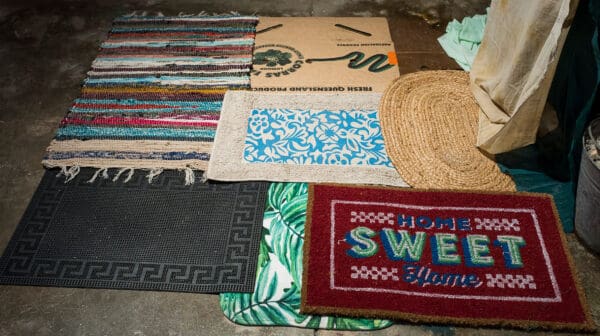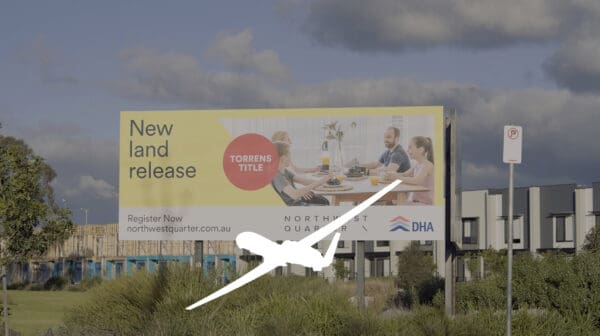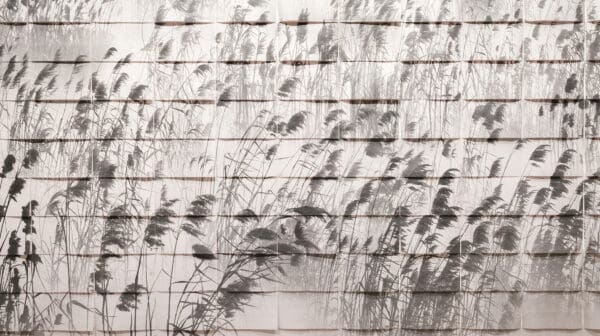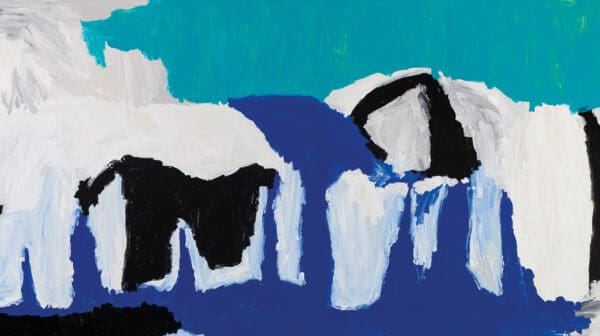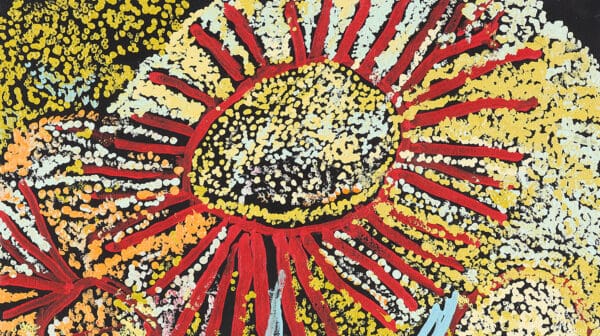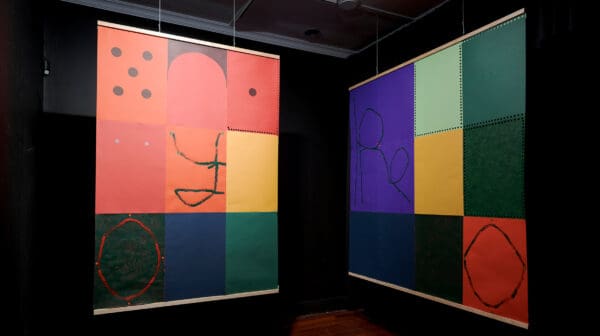When Kamberri/Canberra-based artist Sammy Hawker heard that her award-winning work Mount Gulaga (2021) had haunted a prize judge’s dreams, she wasn’t surprised. Her works have a history of whispering, shimmering, and visiting people in the night.
Through what she terms “facilitated acts of co-creation,” Hawker gives voice to places, materials, and the more-than-human world. Under her gentle guidance, whale song takes shape, ocean water becomes collaborator, salt crystals scatter themselves like stars across analogue film, and ashes murmur secrets onto silver nitrate-soaked paper.
Her processes are unpredictable. Her outcomes feel like conversations—images formed through intuition, trust, and deep listening. “There is a sense when a material wants to make work together,” Hawker says. “There is a feeling of alignment or serendipity often accompanied by a visceral sensation, like a shiver down the spine.”
A recent shiver involved Humpback Whale Migrating South (2024), one of the centrepieces in Hawker’s exhibition at Tweed Regional Gallery, on Bundjalung Country in northern New South Wales. The image was photographed on 35mm film and processed using ocean water collected at the site. “When I took the photographic negative out of the jar of ocean water, I couldn’t help but smile at how much its visual contribution seemed to reflect the whale’s playful resonance,” she says. “A sweep of salt residue across the middle of the photograph resembles the outline of a dolphin. I guess the dolphin didn’t want to be left out of the image!”
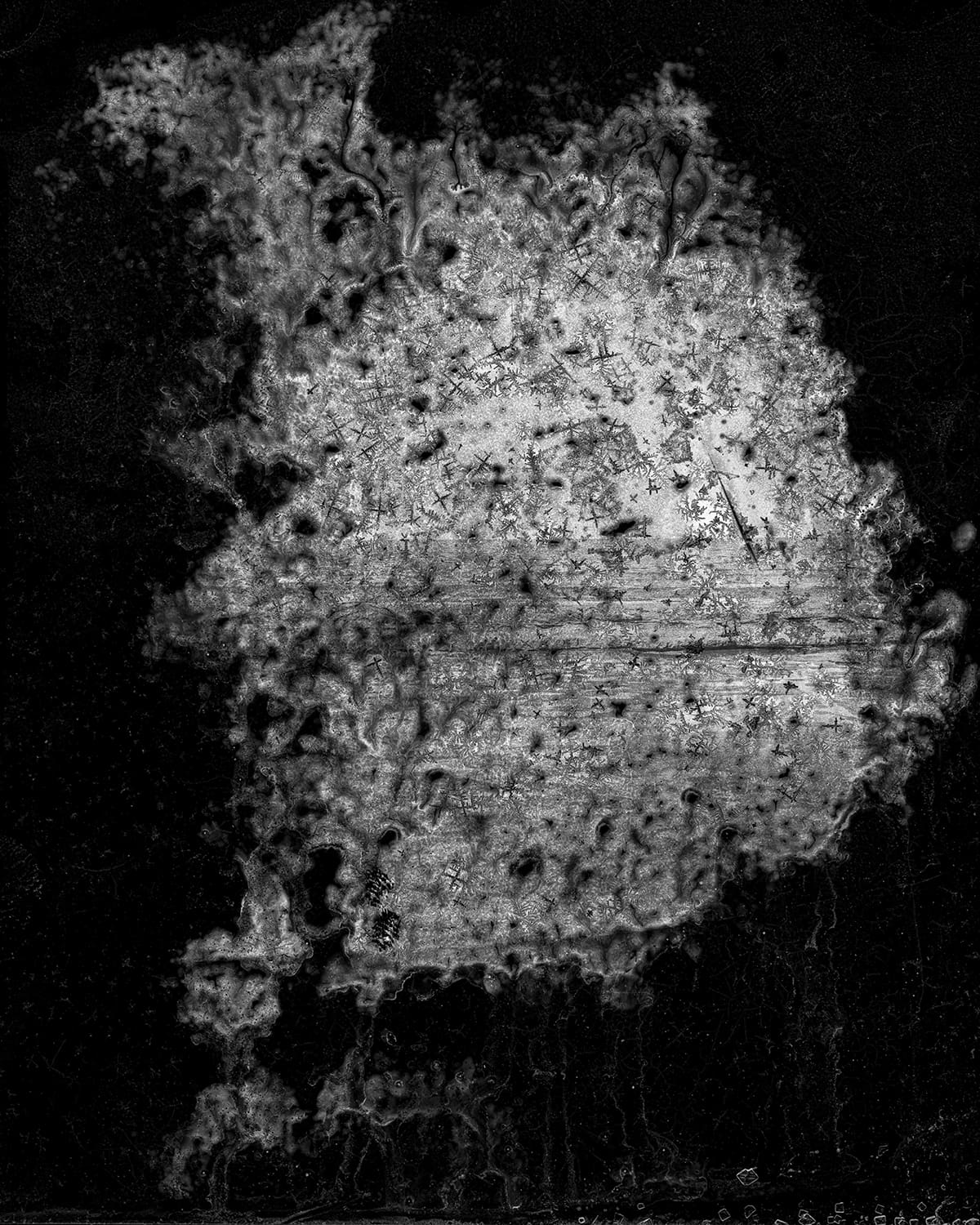
Another eerie example involved Dark Crystals (2021), which began appearing in a close friend’s dreams after she saw it on exhibition. Like Mount Gulaga, the work was processed with ocean water collected from Walbunja Country (Yuin Nation). “We later realised Dark Crystals was created on and with the same place she had spread a loved one’s ashes,” says the artist.
At the heart of Hawker’s practice is her unwavering commitment to reciprocity, “a practice of exchange—to give and receive in a balanced way,” she explains. It’s a concept that has shaped her work since her honours year at Sydney College of the Arts in 2015, under the supervision of Bianca Hester. Since then, she has participated in a range of initiatives exploring cultural competency and reflexive collaboration, including Catchment Studio, The Corridor Project, Bundian Way Arts Exchange, Plumwood Inc., and The Fenner Circle.
Hawker’s process takes time, ongoing conversations, and a meaningful connection to place. An essential part is building relationships with Traditional Custodians and local ecologists who care for the Country she works with. “I do my best to work respectfully; treading lightly, donating profits from artwork sales back to Country, working in alignment with Indigenous Cultural and Intellectual Property (ICIP) protocols, and remaining open to how I can continually fine-tune a respectful approach to a place-based practice,” she says. “I’ve been advised by various custodians to ‘ask Country’ when working on or with it. To ask and to listen are essential components of a reciprocal relationship.”
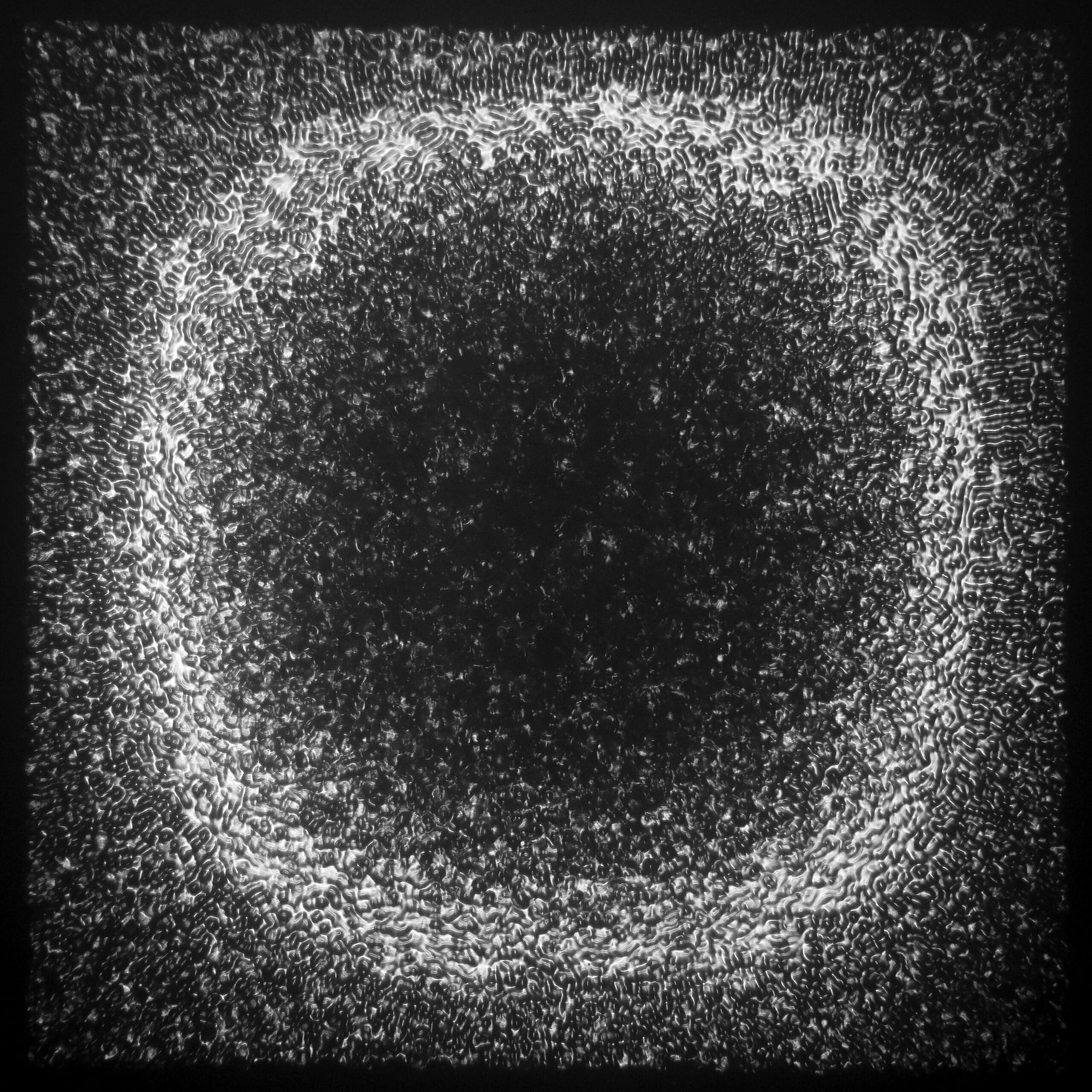
This ethos ripples and flows through her Tweed show, which follows the humpback whale migration cycle along the east coast of Australia. The exhibition features two central bodies of work: 35mm film photographs like Humpback Whale Migrating South, and a series of cymatic images—visual representations of whale song created using a bespoke instrument that translates sound vibrations into form. Developed in collaboration with Kamberri/Canberra-based designer Sam Tomkins and drawing on recordings by Mark Franklin of The Oceania Project, the resulting images are hauntingly abstract and pulsing with presence. “It’s been a joy to work on,” says Hawker. “So many late nights fine-tuning the cymatic instrument in the studio, whale song emanating around me like a dark glittering fog.”
In October, Hawker embarks on an international residency as part of a cultural exchange between The Corridor Project (Wiradjuri Country) and Messums Org (UK). Coinciding with the residency is her solo Ghosts [& Monsters] at Messums West in Wiltshire, UK—a gallery housed in a restored 13th-century barn. Come mid-2026, she presents work developed during the coming residency at the launch of Messums East, a gallery and cultural centre in the former Post Office building in Lowestoft, UK. Later next year, a major survey of Hawker’s practice will be staged at Orange Regional Gallery on Wiradjuri Country in New South Wales.
While exhibitions and accolades are important, for Hawker the real reward lies in how her work communicates—often in unexpected or uncanny ways. “When reflecting on my practice, I think a lot of what I make comes back to our society’s resistance towards the natural processes of time, gravity and death,” she says. “I think about how disintegration can also be thought of as metamorphosis. There’s a beauty in surrendering our need for constant control, instead accepting these processes as part of the human, and post-human, experience.”
Much like whale song, Hawker’s works resonate long after they are experienced. Her practice invites us to slow down—to consider the quiet intelligence of matter, memory, and the more-than-human world.
Worlds Around Us
Sammy Hawker
Tweed Regional Gallery
Until 9 November

